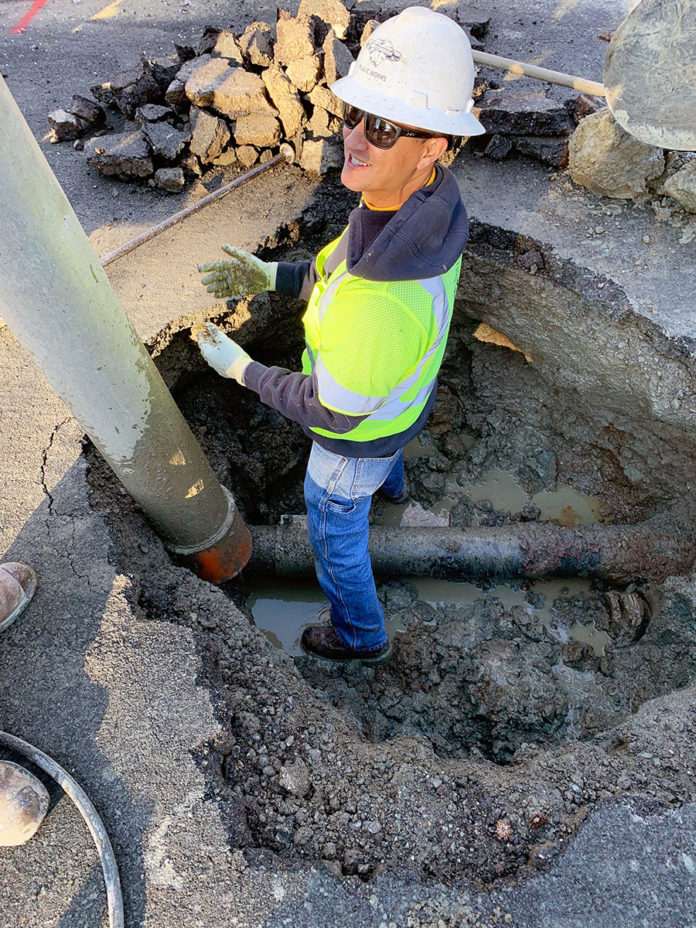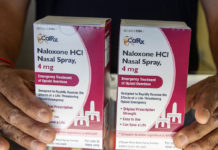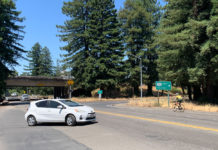
Healdsburg residents learned late last week that they will pay more for water delivery and wastewater services over the next three years and beyond, with increases of 18% expected in Fiscal Year 2024-25 alone, beginning with the July utility bill.
Inflation, lower-than-projected water sales (or usage; much of the decline is based on revised water use habits in the wake of the extended drought), new water treatment requirements and the need to replace centuries-old water pipelines are all driving these increases, according to Terry Crowley, the city’s utilities director.
“One of the many challenges facing the city’s water and wastewater departments is the amount of aging infrastructure serving our community,” Crowley said. “There are roughly 120 miles of water and wastewater pipes buried underneath the city; enough pipe to reach the Golden Gate Bridge and travel back to Healdsburg.
“Many of these pipes, over a third, are more than 50 years old with some dating as far back as 1910. Adequate funding for the replacement of these pipes has not existed for many years, creating a backlog of deferred maintenance,” he added.
The city attempted to soften the blow to consumers by calling the rate spikes “revenue adjustments,” rather than “rate increases,” but it adds up to the same thing. Single-family residents will see higher costs, but they will be less in percentage and actual dollars than the increases seen by commercial and industrial users.
“We recognize that rate increases create a burden for many customers,” City Manager Jeff Kay said in his most recent report, released March 22. “We also acknowledge the frustration when commendable conservation efforts are cited as one of the causes. The reality is that the costs to operate the water and sewer systems do not go down when usage goes down.”
Residents who found the Notice of Public Hearing (in both English and Spanish languages) in their mailboxes last week were alerted to the increases as part of a process mandated by state Proposition 218. That switches on a 120-day notification and review clock, which will require a public hearing at the city council meeting of Monday, May 6.
Rates Flow Uphill
It may seem contradictory to increase water rates when water use has decreased, but city staff have stressed for months that using less water means that the relative cost per gallon goes up. To maintain infrastructure, personnel and hard costs, and to make significant capital expenditures on necessary deferred maintenance, overall utility charges must increase.
The increases will not be uniform hikes over current rates, but a staggered schedule of increases for residential customers, agricultural and landscape users, and tiered rates based on usage. The schedule and leveling of charges across the customer base should mean the rate increase will have less impact on the residential household with relatively low water usage, compared to large water users.
The basis for charging water use will be stabilized at a cost based on one hundred cubic feet (HCF) for all users. Currently all users are charged $6.48 for the first 0-5 HCF. A typical household’s peak summer use is usually between 6-10 HCF, or two HCF units; combined, this brings a total of $12.96 per single-family residence.
Starting next year, the second tier 6-10 HCF rate will increase slightly to $8.41, and a third tier of over 10 HCF will be implemented at a still higher rate, $10.80. Increased rates for non-residential classes—commercial, industrial and landscape—will also creep up.
Additionally, over time the single-family residential water service charge will also increase from $46.67 currently, to $51.33 in July 2024, to $60.57 in July 2025 and to $69.66 in July 2026.
By 2027, residential rates across the board will have increased to $8.80 for Tier 1, $11.41 for Tier 2 and $14.65 for Tier 3, above 10 HCF a month. Non-residential rates will be higher still, from $10.33 up to $15.01.
Wastewater fees, i.e. sewage charges, must also increase for similar reasons of maintenance and hard costs. Current sewage fees are $46.67 for a single-family residence; they would increase to $51.33 in July 2024, then to $60.57 in July 2025 and to $69.66 in 2026 for FY 2026-27.
Higher rates for larger households, and commercial and industrial services, would also be implemented.
The sum of all these increases mean higher monthly water and wastewater bills coming from the city starting this summer. The proposed increases would make Healdsburg utilities the priciest in Sonoma County, a position now held by Cloverdale. Only Calistoga and St. Helena, both in Napa County, would have higher utility rates in the area.
Public Input
Since such utility rate increases are governed by State Proposition 218, they have to go before a 120-day public review process. That process was kicked off by the release of the notice to residents last week. The city has scheduled a public hearing on the new water and wastewater utility fees for Monday, May 6, during the regular city council meeting scheduled to begin at 6pm.
Written protests or testimony about those rate adjustments are being received currently, addressed to the Healdsburg City Clerk at City Hall, 401 Grove St., Healdsburg, CA 95448. Those communications as well as public comment at the May 6 meeting will constitute public review of the new rate structure.
The city council is scheduled to pass the new rates at its May 20 meeting, to be incorporated into the FY 2024-25 budget.









Several parts of the City’s water rate increase proposal are frankly outrageous and place an undue burden on homeowners.
Currently we are charged $6.48 per hundred cubic feet, but under the new 3 tier system, in 2026, that will jump to $14.65 for amounts over 10 hundred cubic feet. Not only is that a 127% increase (more than double), but that $14.65 rate is higher than commercial ($10.33) and industrial ($12.88) customers. That means the Montage, Mill District and the North Village will pay less per HCF than normal homeowners.
And with all of these new developments continuing to build, how has that been factored into their calculations? With these new developments, how can overall demand be down?
Also, in the notification letter from the city, they include an example of how the rates would affect a small household, undoubtedly on a small lot. And that calculation is incorrect! Of the 12 numbers shown, half of them are wrong — not by much, but if the city is this careless with their written communications, where else did they also make other miscalculations?
Repairing the water pipes should not be simply added to everyone’s bill, but personally, I think that would be more appropriately funded by a bond issue. (Does anyone think that after the rate increases and the 120 miles of pipe are repaired, that our rates would go DOWN?)
We just had a rate increase.
We need a lot more answers & information before we let the city place this burden on us.
Healdsburg’s failing water and sewer infrastructure, and the need to secure a reliable water source, are now an emergency priority for the city to address (“Water, Wastewater Rate Increases On Tap,” March 28). It will be costly and will require rate increases. However, the new rate structures borne by residents should not be made in isolation and without the current City Council rethinking its entire budget and allocation of resources.
Under the city’s current proposal, the rate increases are eye-popping. The average family households’ water and sewer bill will go from $166.53/month to $200.73/month. That is the highest in Sonoma County, and 80% higher than the $111/month rate in Windsor. In 2 years, the rates will reach $272.30/month—that is an extra $105.78/month, and almost + $1,300 a year more than we pay now. With the electric rate increased approved last year, the utility rates in Healdsburg will be an EXTRA $2,000+ for a single-family home in 2 years.
In the past three years, the Council has expanded our local government’s role beyond critical infrastructure, public safety and affordable housing to spend millions on new initiatives such as DEI, Universal Income Pilot Studies and Climate Action projects that surpass state mandates. While laudable, we cannot afford those new initiatives and need to refocus city funds.
Residents and businesses in Healdsburg should require the City Council to prove that they have scoured their budgets to 1) reduce overhead/staffing costs where possible, and 2) redirect funds allocated for any “nice to have” projects to address our critical infrastructure needs and, as much as possible, reduce the dramatic impacts born by residents.
We cannot continue business as usual in the face of this elephant in the room. When city staff notes in their Feb. 5th preliminary report that “while the new proposed revenue increases are significant, they are fundamental to meeting the basic operating needs of the utility funds and securing safe and reliable water and sewer services”—they are correct. But that must include the City Council and staff making hard choices about their operating costs and projects, in addition to residents.
Karen Maley
Healdsburg
We strongly oppose the proposed sewer and water rate increase. The city needs to take a closer look at the current budget and reallocate!